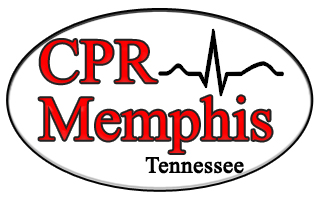UNKNOWN LAB REPORT
Microbiology Unknown Lab Report
Jessica Palmer, Spring 2013
INTRODUCTION
The purpose of this lab was to identify two unknown bacteria from a mixed culture. The reason for identification of unknown bacteria was to help students recognize different bacteria through different biochemical tests. This is important in the medical field because identification of unknown bacteria can help treat a patient by knowing the contributing source of a disease. This lab was completed by using the methods learned throughout the semester in lab.
MATERIALS AND METHODS:
A mixed culture of on unknown bacteria labeled #102 was provided by the lab professor Jay Snaric. This unknown broth contains two bacteria’s; a Gram positive, and a Gram negative. The methods that were needed to help identify the two unknown bacteria were in the laboratory manual by Virginia McDonald, unless otherwise noted. The first procedure that needed to be done was a four way streak on a Nutrient Agar Plate (pg 10). Once, the two bacteria’s were isolated onto the Nutrient Agar Plate it was then incubated and grown, and then another isolation occurred to separate the different bacterium onto their own Nutrient Agar Plate to isolate them away from each other. This same day a Gram stain was done from the original Nutrient Agar Plate of the original isolation because it only looked like there was one bacterium growing, so the Gram stain was performed and the result was Gram positive cocci. The results from the Gram stain showed that one of the two bacteria’s were identified calling it Unknown A because it is unknown until further test are performed. After a few days went by the results of the other two Nutrient Agar Plates where Gram stained, luckily these Gram stains were performed and the results showed up as one being positive cocci, and the other being negative rods. So now that Unknown A has been identified as Gram positive and Unknown B has been identified as Gram negative, different biochemical test are being performed from the specific nutrient agar that has the isolated colonies of just the bacterium. As of now a streak was done onto a Mannitol Salt Agar (MSA) and a Milk Agar from the nutrient plate that had the isolation of Gram positive, this was performed by using the inoculating loop to take a sample of the isolation and streak it onto the Mannitol Salt Agar (MSA) and a Milk Agar. The Mannitol test will inform if the high salt concentration inhibits growth, if it has growth it means that specific bacterium ferments the Mannitol and a color change will occur on the agar (pg. x). The Milk Agar plate will produce a clearing around the area of growth to indicate a positive result, showing that this bacterium can produce the enzyme casease (pg. x). After these plates were streaked with the bacterium it was incubated for two days. This same day a sample was taken from the Nutrient Agar plate that just contained the Gram negative bacterium and was inculcated into a Simmons Citrate Test and a Methyl Red after these tubes were inculcated they were placed into the incubator. The Simmons Citrate Test will inform if the gram negative bacterium can utilize citrate as a carbon source (pg. xi). In addition, the Methyl Red Test will inform if this specific gram negative bacterium can produce acids from glucose metabolism. A few days passed, and all the results were recorded. Now more biochemical tests were taken place for the Gram positive bacteria, Unknown A. Now with a sterilize inoculating loop a sample was taken from the Nutrient Agar of just the Gram positive that was performed earlier in this experiment. This will be inoculated into a Nitrate Test, and a Urea Test with the process of steps that were preformed all semester long. After each of these test were done with their own sterilize inoculating loop from the Nutrient Agar Plate of just the Gram positive theses two tubes were placed into the incubator for a few days. This same day biochemical tests were performed on the Gram negative bacteria, Unknown B. With the processes that were learned throughout this semester in lab the Nutrient Agar that contained the Gram negative bacterium was inoculated into a Voges Proskauer Test, and a Urea Test. After each of these test were performed these two tubes were also placed into the incubator for a few days. Days went by and results were checked and recorded. The Nitrate test was performed to see the final results, and reagents A and B were added with 6-7 drops of each (pg 38). Now the results of the Urea test were recorded. Now results were recorded for the Unknown B. The Voges Proskauer test was performed to see the final results, reagent Barritt’s A and B were added with 7 drops of Barritt A and 2 drops of Barritt B were added and then the tube was mixed well. Then the Urea test was recorded for the gram negative bacterium. These biochemical tests that were performed on both the gram positive and gram negative unknowns were tests that were practiced throughout the semester in the microbiology laboratory manual by Virginia McDonald.
Table 1.1 lists the test, purpose, reagents and results of Unknown A.
All of the following tests were performed on this Unknown: Unknown A
- Mannitol Test
- Casein Test
- Nitrate Test
- Urea Test
Table 1.2 lists the test, purpose, reagents and results of Unknown B.
All the following tests were performed on this Unknown: Unknown B
- Simmons Citrate Test
- Methyl Red
- Voges Proskauer
- Urea Test
RESULTS:
Unknown A #102 had growth on a Nutrient Agar. After determining it was Gram positive cocci, a Mannitol Test was performed along with a Milk Agar. These results showed that there was no growth on the Mannitol Salt Agar (MSA), which means this test was negative because this specific bacterium cannot tolerate the high salinity because the mannitol fermenters did not produce acid to change the phenol red to yellow, the result of the plate was still red. Results were then checked for the Milk Agar plate and this test was also negative meaning that the casein was not hydrolyzed by the organism so the agar plate remained white (pg. x). In addition, because of these results a Nitrate and Urea test were performed from the Nutrient Agar of the Gram positive isolation. The Unknown A was inoculated into a Nitrate tube and a Urea tube. Nitrate Test was positive after the reagents were added meaning it was a positive Nitrate reduction, and the Urea Test was also a positive result because the urea test is degraded and ammonia is produced which means it is an alkaline environment because the color of the broth was pink. After these biochemical test were performed and recorded from the identification chart that was handed out by the professor the result of Unknown A is Staphylococcus epidermidis. Table 1.1 lists all of the biochemical tests, their purposes and the final results of the biochemical test. The results are also shown in a flow chart form as well.
Unknown B #102 had growth on a Nutrient Agar. After determining it was Gram negative rods, a Simmons Citrate Test was performed along with a Methyl Red. These results showed that this Unknown was a positive result for both test meaning it was able to utilize citrate as a carbon source, and it was able to produce acid from glucose metabolism. As a result, because of these two test results a Voges Proskauer and Urea test were performed from the Nutrient Agar of the Gram negative isolation. The Unknown B was inoculated into a Voges Proskauer tube and a Urea tube. Voges Proskauer Test was positive after Barritt A and B were added meaning it was a positive results for production of acetyl methyl carbinol, and the Urea Test was also a positive result because the urea test is degraded and ammonia is produced which means it is an alkaline environment because the color of the broth was pink. After these biochemical test were performed and recorded from the identification chart that was handed out by the professor the result of Unknown B is Klebsiella pneumoniae. Table 1.2 lists all of the biochemical tests, their purposes and the final results of the biochemical test. The results are also shown in a flow chart form as well.
|
Table 1.1: Results of the Unknown #102 Staphylococcus epidermidis
|
||||
|
TEST |
PURPOSE |
REAGENTS/MEDIA |
OBSERVATIONS |
RESULTS |
|
Gram Stain |
To determine the Gram reaction of the bacterium |
Crystal violet, Iodine, Alcohol, Safranin |
Purple cocci |
Gram positive cocci
|
|
Mannitol Test |
To determine if the organism can ferment mannitol |
Mannitol Sat Agar |
Change the color of the Mannitol salt agar (MSA) from red to yellow. There was no color changed |
Negative mannitol fermenter |
|
Casein Test |
To test the ability of an organism to produce an exoenzyme, called casease, that hydrolyzes casein |
Milk Agar |
The casein was not hydrolyzed by the organism so the agar plate remains white |
Negative did not eat the casein on the agar plaque |
|
Nitrate Test |
To determine the ability of an organism to reduce nitrate |
Reagents A&B are added |
Turned red |
Positive result for nitrate reduction |
|
Urea Test |
To identify if the organism is capable of hydrolyzing urea using the enzyme urease |
Urea broth |
Change of the color of the tube from yellow to pink |
Positive because the urea test is degraded and ammonia is produced which means it is an alkaline environment |
FLOWCHART – (removed due to formatting issues)
Unknown Positive– Staphylococcus epidermidis
|
Table 1.2: Results of the Unknown #102 Klebsiella pneumonia
|
||||
|
TEST |
PURPOSE |
REAGENTS/MEDIA |
OBSERVATIONS |
RESULTS |
|
Gram Stain |
To determine the Gram reaction of the bacterium |
Crystal violet, Iodine, Alcohol, Safranin |
Red Rods |
Gram negative rods
|
|
Simmons Citrate |
Tests the ability of organisms to utilize citrate as a carbon source |
Citrate Agar Slants |
Changed color from green to blue |
Positive was able to utilize citrate as a carbon source |
|
Methyl Red
|
To test if it produces acids from glucose metabolism, causing the pH to drop below 4.4. |
A pH indicator methyl red is added |
When the indicator methyl red was added to the acidic broth the color appeared a red |
Positive methyl red produced acid from glucose metabolism. |
|
Voges Proskauer |
To determine the production of acetyl methyl carbinol |
Reagents Barritt’s A&B are added |
Turned pink/burgundy |
Positive result production of acetyl methyl carbinol |
|
Urea Test |
To identify if the organism is capable of hydrolyzing urea using the enzyme urease |
Urea broth |
Change of the color of the tube from yellow to pink |
Positive because the urea test is degraded and ammonia is produced which means it is an alkaline environment |
FLOWCHART – *arrows removed due to formatting issues
UNKNOWN #102
Gram Stain
Gram negative Rods
Simmons Citrate (Positive)
Negative Positive
Escherichia coli Klebsiella pneumoniae
Proherichia colius epidermidis inolteus vulgaris Enterobacter aerogenes
Pseudomonas aeruginosa
Methyl Red (Positive)
Positive Negative
Escherichia coli Enterobacter aerogenes
Klebsiella pneumonia Pseudomonas aeruginosa
Proteus vulgaris
Voges Proskauer (Positive)
Positive Negative
Klebsiella pneumoniae Escherichia coli
Enterobacter aerogenes Proteus vulgaris
Pseudomonas aeruginosa
Urea Test (Positive)
Positive Negative
Klebsiella pneumoniae Escherichia coli Proteus vulgaris Enterobacter aerogenes Pseudomonas aeruginosa
Unknown Negative- Klebsiella pneumoniae
DISCUSSION/CONCLUSION:
The Unknown #102 was a combination of two different types of bacteria’s. This Unknown consisted of one gram positive and one gram negative. The Unknown in #102 identified as Unknown A was classified as gram positive cocci. After close observations and multiple biochemical tests were performed Unknown A was identified to be Staphylococcus epidermidis. The biochemical tests results lead me to this identification because after a gram stain was done it was possible to determine the bacterium a cocci, two bacteria’s were crossed off the list right away. With three types of bacteria’s remaining; Staphylococcus aureus, Staphylococcus epidermidis, and Enterococcus faecalis more biochemical test were performed. So the following two tests were performed, Mannitol Test and Casein Test which both showed a negative result. After these results were finalized two more tests took place a Nitrate Test and Urea Test which in this case both results were positive. After the results of these biochemical test there was only one bacterium on the identification chart that had these results which in this case the only bacterium is could possibly be was Staphylococcus epidermidis. The identification of the Unknown A being Staphylococcus epidermidis was correct. The Unknown B of #102 was identified as gram negative rods. After close observations and multiple biochemical tests were performed Unknown B was indentified to be Klebsiella pneumonia. The biochemical tests that were performed lead me to this identification. There were five different bacteria’s this Unknown could have been; Escherichia coli, Klebsiella pneumoniae, Enterobacter aerogenes, Proteus vulgaris, and Pseudomonas aeruginosa. With the Simmons Citrate Test, Methyl Red, Voges Proskauer, and a Urea test were performed and with all positive results the only bacterium that had all positive results for these tests on the identification chart was Klebsiella pneumonia. The identification of the Unknown B being as Klebsiella pneumonia was correct. This experiment did not seem to have any problems and all results were correct.
In conclusion, research has been done on Unknown A identified as Staphylococcus epidermidis to further understand it. Staphylococcus epidermidis, is a gram positive, and is part of our normal flora. This bacterium is one of thirty-three species belonging to the genus Staphylococcus (Staphylococcus). Staphylococcus epidermidis does not cause illness and it is known that some strains may even have a beneficial role for humans. When Staphylococcus epidermidis does cause illness, it is frequently in a hospital setting. It can cause infection on biomaterials such as catheters, and implants (Discussed in Lecture). Because Staphylococcus epidermidis can cause infection in such a wide variety of locations in the body, symptoms of infection are partially dependent on where the infection is. Some symptoms that may be common to all Staphylococcus epidermidis infections include fever, fatigue, pain or tenderness at the site of an implant, rapid breathing, rapid heartbeat and sweating. Many strains of Staphylococcus epidermidis that cause illness produce a slime that can form a biofilm. This biofilm allows the bacteria to stay on biomaterials and helps the bacteria resist the immune system and many antibiotics and antimicrobials. With that being said, Staphylococcus epidermidis is resistant to many antibiotics, including methicillin, all penicillins, penems, carbapanems and cephalosporins (Discussed in Lecture). Now that this research has been done on Staphylococcus epidermidis it is a better understanding of how this bacterium occurs, and how you can help treat it. Also, remember having this specific bacterium is a good thing because it is part of the normal flora on our skin but when it gets into the blood, which is when one should be concerned and worried.
REFERENCES:
McDonald, Virginia . “St. Louis Community College at Meramec.” Lab Manual for General Microbiology Apr. 2011: i-93. Print.
“Staphylococcus epidermidis – Bacteria Reference Library – redOrbit.” redOrbit – Science, Space, Technology, Health News and Information. N.p., n.d. Web. 27 Apr. 2013. http://www.redorbit.com/education/reference_library/health_1/bacteria/2584198/staphylococcus_epidermidis.
“Staphylococcus epidermidis – MicrobeWiki.” MicrobeWiki. N.p., n.d. Web. 28 Apr. 2013. http://microbewiki.kenyon.edu/index.php/Staphylococcus _epidermidis





